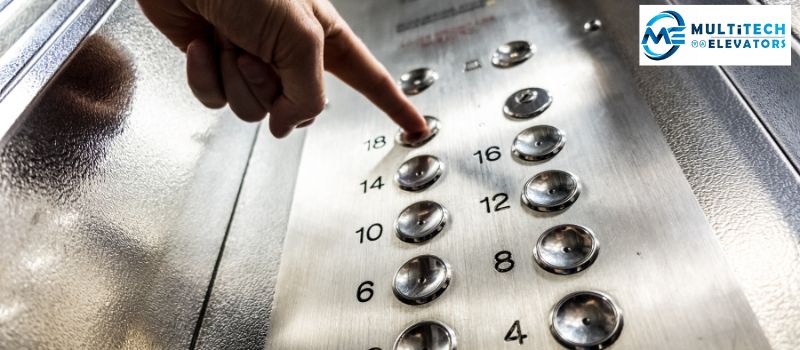
Elevators and escalators are indispensable components of modern infrastructure, facilitating vertical and inclined movement in buildings and public spaces. Both systems enhance accessibility and efficiency, though they operate on different principles. This guide provides an in-depth look into the mechanics, applications, and advancements of these vital systems.
Elevators
What is an Elevator?
An elevator, also known as a lift, is a vertical transportation device used to move people or goods between different floors of a building. It operates within a shaft and can be found in various settings, from residential buildings to commercial skyscrapers.
Types of Elevators
-
Hydraulic Elevators: Hydraulic elevators use a fluid-driven piston to lift and lower the car. The hydraulic system consists of a pump, cylinder, and piston. When the pump forces hydraulic fluid into the cylinder, it pushes the piston up, moving the elevator car. These elevators are typically used in low-rise buildings due to their slower speed and limited travel height.
-
Traction Elevators: Traction elevators rely on a system of pulleys and ropes. A motor drives a sheave (wheel), which moves the ropes and, consequently, the elevator car. There are two main types of traction elevators:
-
Geared Traction Elevators: They use gears to control the movement of the sheave. They are suitable for medium-rise buildings.
-
Gearless Traction Elevators: These have a motor directly connected to the sheave, offering smoother and quieter operation. They are ideal for high-rise buildings.
-
-
Machine Room-Less (MRL) Elevators: MRL elevators do not require a separate machine room, as the motor is located within the hoistway. This design saves space and is often used in low to mid-rise buildings.
-
Freight Elevators: Designed for transporting goods rather than passengers, freight elevators are typically larger and more robust. They are commonly found in industrial and commercial settings.
How Elevators Work
The operation of an elevator involves several components:
-
Car: The enclosed platform that carries passengers or goods.
-
Hoistway: The vertical shaft through which the elevator travels.
-
Counterweights: These balance the weight of the elevator car, reducing the load on the motor.
-
Control System: Manages the movement and stopping of the elevator based on user input.
Elevators are equipped with safety features such as emergency brakes, alarms, and communication systems to ensure safe operation.
Escalators
What is an Escalator?
An escalator is a moving staircase designed to transport people between different levels of a building or public space. It consists of a continuous loop of steps that move along a track, providing a convenient and efficient means of vertical transportation.
How Escalators Work
Escalators operate using a series of mechanical components:
-
Steps: The individual platforms on which passengers stand.
-
Track: The pathway that guides the movement of the steps.
-
Handrails: Moving railings that move in sync with the steps to provide support and balance.
-
Motor: Drives the escalator’s steps and handrails.
The steps are connected to a continuous chain, which is driven by the motor. As the chain moves, the steps are lifted at the rear and descend at the front, creating a seamless flow of moving stairs.
Types of Escalators
-
Straight Escalators: The most common type, featuring a linear path between two levels.
-
Curved Escalators: Designed to navigate around corners or changes in direction. These are often used in large public spaces like shopping malls and airports.
-
Inclined Moving Walkways: Similar to escalators but designed to transport people horizontally or on a slight incline. They are often used in airports and large transportation hubs.
Applications and Benefits
Escalators are ideal for high-traffic areas, providing a continuous flow of movement and reducing the need for elevators in spaces with high passenger volumes. They are commonly found in shopping malls, airports, transit stations, and office buildings.
Advancements and Innovations
Both elevators and escalators have seen significant advancements in recent years:
-
Smart Technology: Modern elevators are equipped with smart control systems that optimize performance, reduce energy consumption, and enhance user experience. Features such as touchless controls and predictive maintenance are becoming increasingly common.
-
Energy Efficiency: Advances in technology have led to more energy-efficient systems, including regenerative drives for elevators and energy-saving escalator motors.
-
Accessibility Features: Both elevators and escalators are incorporating features to improve accessibility for people with disabilities. Voice commands, braille buttons, and step width adjustments are examples of such enhancements.
-
Design and Aesthetics: Innovative designs are improving the visual appeal of elevators and escalators, allowing them to blend seamlessly with architectural aesthetics while maintaining functionality.
Conclusion
Elevators and escalators are crucial to modern infrastructure, providing essential vertical and inclined transportation in various settings. Understanding their mechanics, types, and advancements helps in making informed decisions regarding their use and maintenance. As technology continues to evolve, these systems will become even more efficient, accessible, and integrated into the fabric of urban life.